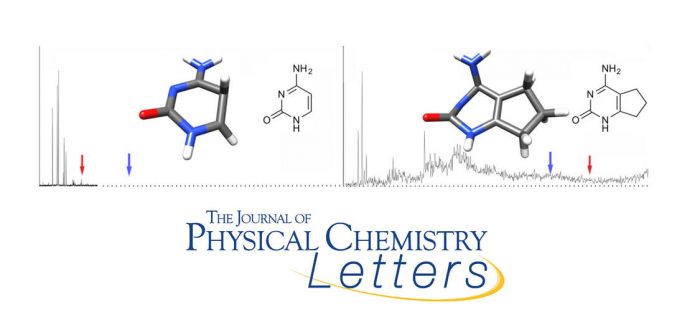The decay mechanism of S0 ? S1 excited cytosine (Cyt) and the effect of substitution are studied combining jet-cooled spectroscopy (nanosecond resonant two-photon ionization (R2PI) and picosecond lifetime measurements) with CASPT2//CASSCF computations for eight derivatives. For Cyt and five derivatives substituted at N1, C5, and C6, rapid internal conversion sets in at 250–1200 cm–1 above the 000 bands. The break-off in the spectra correlates with the calculated barriers toward the “C5–C6 twist” conical intersection, which unambiguously establishes the decay mechanism at low S1 state vibrational energies. The barriers increase with substituents that stabilize the charge shifts at C4, C5, and C6 following (1??*) excitation. The R2PI spectra of the clamped derivatives 5,6-trimethyleneCyt (TMCyt) and 1-methyl-TMCyt (1M-TMCyt), which decay along an N3 out-of-plane coordinate, extend up to +3500 and +4500 cm–1.
The paper by Lluís Blancafort and co-workers appeared online recently in the Journal of Physical Chemistry Letters:
M.A. Trachsel, S. Blaser, S. Lobsiger, L. Siffert, H. Frey, L. Blancafort, and S. Leutwyler
“Locating Cytosine Conical Intersections by Laser Experiments andAb Initio Calculations”
J. Phys. Chem. Lett. 2020, 11, 3203-3210
DOI: 10.1021/acs.jpclett.0c00779

